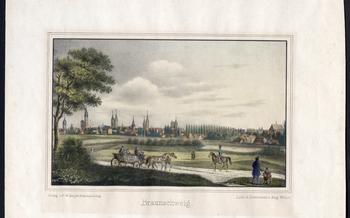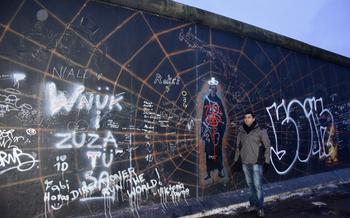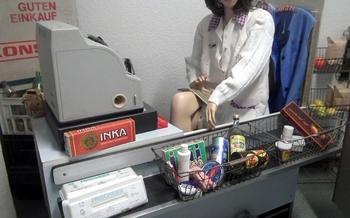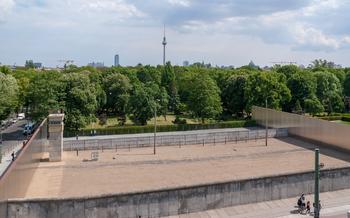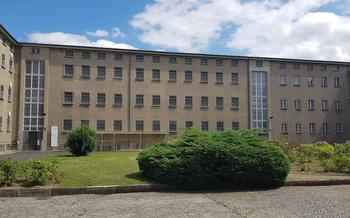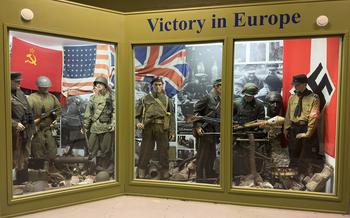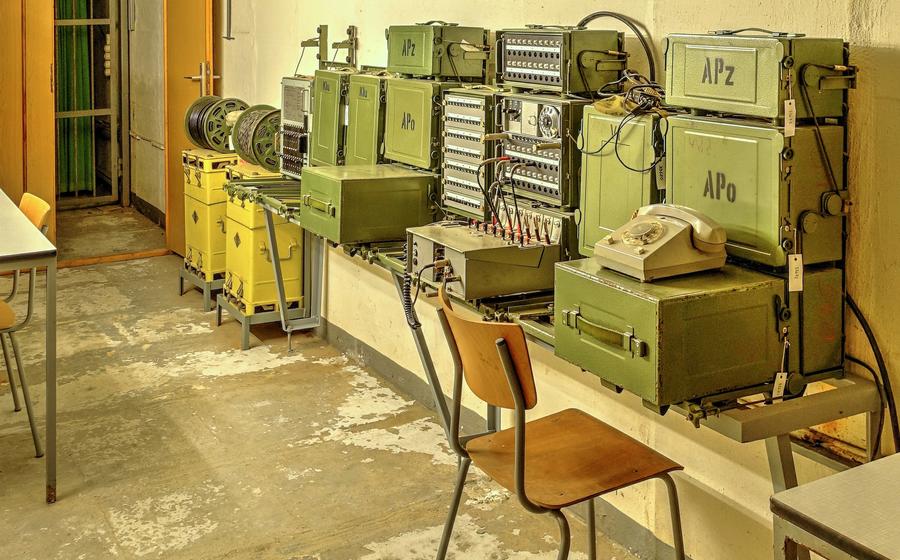
Stasi Bunker Museum
- A Journey Through History
- Opening Hours and Admission Fees
- Exhibitions and Displays
- The Command Center: Nerve Center of Stasi Operations
- Secret Tunnels and Escape Routes
- Listening and Monitoring Devices
- The Stasi Archives
- The Role of the Stasi in the Fall of the Berlin Wall
- Personal Stories and Testimonies
- Educational Programs and Workshops
- Temporary Exhibitions and Events
- Museum Shop and Souvenirs
- Insider Tip
A Journey Through History
The Stasi Bunker Museum, once a secret command post of the dreaded East German secret police, the Stasi, now stands as a chilling relic of the Cold War era. Its imposing concrete walls and barbed wire fences bear witness to a time when surveillance and oppression were pervasive. Within its labyrinthine corridors, visitors are transported back to a period marked by state-sanctioned paranoia and the relentless pursuit of dissent. This museum serves as a powerful reminder of the fight for freedom and the resilience of the human spirit in the face of adversity, offering a unique perspective on the history of the German Democratic Republic (GDR) and its far-reaching impact.
Opening Hours and Admission Fees
The Stasi Bunker Museum is open to the public from Tuesday to Sunday, with varying hours depending on the season. During the summer months (April to October), the museum is open from 10:00 AM to 6:00 PM, while in the winter months (November to March), it operates from 10:00 AM to 4:00 PM.
Admission fees are as follows: - Adults: 8 euros - Concessions (students, seniors, disabled): 6 euros - Children under 14: Free
Guided tours in English are available upon request and are subject to an additional charge of 2 euros per person. Advance online booking is recommended, especially during peak tourist season, to avoid long queues and secure your preferred time slot.
Exhibitions and Displays
The Stasi Bunker Museum offers a range of permanent and temporary exhibitions that showcase the Stasi's surveillance methods and the impact of their actions on the lives of ordinary citizens. Permanent exhibits include displays on the Stasi's surveillance techniques, such as wiretapping, bugging, and mail interception. Visitors can also learn about the Stasi's methods of psychological manipulation and control, as well as the role of Stasi informers and collaborators.
The museum also hosts temporary exhibitions that explore specific aspects of Stasi history and surveillance. Past exhibitions have focused on topics such as the Stasi's role in the fall of the Berlin Wall, the Stasi's persecution of dissidents, and the Stasi's collaboration with other secret police agencies in the Eastern Bloc.
Interactive displays throughout the museum enhance the visitor experience. Visitors can listen to recordings of intercepted phone calls, view surveillance footage, and try their hand at decoding encrypted messages. The museum also features a number of historical artifacts, such as surveillance equipment, uniforms, and personal belongings of Stasi officers.
The Command Center: Nerve Center of Stasi Operations
The command center, also known as the "Nervenzentrum" (nerve center), was the heart of the Stasi's operations. It was from here that the Stasi coordinated its vast network of surveillance and control. The command center was equipped with state-of-the-art communication systems, computers, and other technology that allowed the Stasi to monitor and track the activities of citizens across the GDR.
The decisions made within the command center had a profound impact on the lives of countless individuals. The Stasi used the information gathered from its surveillance activities to identify and target dissidents, political opponents, and anyone deemed a threat to the regime. The command center also played a crucial role in coordinating the Stasi's response to public protests and demonstrations.
The command center was a symbol of the Stasi's power and authority. Its very existence sent a clear message to the people of the GDR that the Stasi was watching and that there was no escape from its reach. The fall of the Berlin Wall and the subsequent reunification of Germany led to the dismantling of the command center. However, the legacy of the Stasi's surveillance and control mechanisms continues to shape the way Germans view their history and their relationship to the state.
Secret Tunnels and Escape Routes
Within the depths of the Stasi Bunker Museum lies a network of hidden passages and escape routes, concealed from the unsuspecting eye. These secret tunnels served as a means of discreet movement for Stasi personnel, allowing them to enter and exit the bunker without detection. They also provided a potential escape route in case of emergency or attack.
The existence of these secret passages underscores the level of secrecy and paranoia that permeated the Stasi's operations. They were carefully constructed and maintained, with multiple layers of security to prevent unauthorized access. Only a select few individuals within the Stasi hierarchy were aware of their existence and had the necessary knowledge to navigate them.
Historical anecdotes abound regarding the use of these secret tunnels. In one instance, a Stasi officer is said to have used the tunnels to escape capture by East German police who were closing in on his location. In another story, a group of Stasi defectors reportedly used the tunnels to flee to West Germany, seeking refuge from the oppressive regime.
The secret tunnels and escape routes of the Stasi Bunker Museum stand as a reminder of the lengths to which the Stasi went to maintain their power and control. They symbolize the paranoia and secrecy that characterized the GDR era and the lengths to which the regime would go to silence dissent and maintain its grip on society.
Listening and Monitoring Devices
The Stasi employed a vast array of listening and monitoring devices to spy on citizens and collect information. These included hidden microphones, wiretaps, and surveillance cameras, which were often concealed within everyday objects such as furniture, telephones, and even toys. The Stasi also used sophisticated eavesdropping techniques, such as parabolic microphones and directional antennas, to intercept conversations from a distance. By utilizing these technological advancements, the Stasi was able to gather vast amounts of personal information on individuals, including their political views, religious beliefs, and private conversations.
The ethical implications of the Stasi's surveillance practices are profound. The use of hidden listening devices and secret wiretaps violated the privacy of individuals and undermined their fundamental right to freedom of expression. The Stasi's surveillance system created a climate of fear and distrust among citizens, as they could never be sure if their conversations were being monitored or if their private lives were being scrutinized.
Furthermore, the Stasi's surveillance practices had a devastating impact on the privacy of individuals. The constant fear of being spied on led to self-censorship and a reluctance to engage in open and honest conversations. This atmosphere of surveillance stifled creativity, intellectual discourse, and the free exchange of ideas, ultimately contributing to the stifling of dissent and the suppression of individual liberties.
The Stasi Archives
The Stasi archives, housed within the Stasi Bunker Museum, represent a vast and invaluable collection of historical documents and files that shed light on the inner workings of the East German secret police. These archives contain an estimated 111 kilometers of files, comprising personal records, surveillance reports, and operational documents. The sheer volume of this material highlights the extent of the Stasi's surveillance and control over East German society.
The personal records held in the archives provide a glimpse into the lives of individuals who were under Stasi surveillance. These files contain detailed information on their political views, personal relationships, and even their daily activities. Researchers and historians have utilized these records to reconstruct the experiences of those who were targeted by the Stasi, shedding light on the human toll of the regime's oppressive policies.
The Stasi archives are not only a valuable resource for historical research but also serve as a reminder of the dangers of unchecked surveillance and the importance of protecting individual privacy. The accessibility of these archives to researchers and the public ensures that the legacy of the Stasi and the lessons learned from this dark chapter in German history are not forgotten.
The Role of the Stasi in the Fall of the Berlin Wall
The Stasi's pervasive surveillance and control mechanisms played a significant role in the downfall of the East German regime. The constant monitoring and suppression of dissent created a climate of fear and distrust, which eventually led to public discontent and resistance. As the Stasi's authority and credibility eroded, the regime's legitimacy was increasingly questioned.
The Stasi's failure to effectively suppress the growing public protests and demonstrations in the late 1980s further weakened its position. The peaceful revolution that culminated in the fall of the Berlin Wall in 1989 was a direct challenge to the Stasi's power and control. The Stasi's inability to prevent the collapse of the regime exposed its vulnerabilities and contributed to its ultimate demise.
The Stasi's role in the fall of the Berlin Wall highlights the fragility of authoritarian regimes that rely on fear and repression to maintain control. It also demonstrates the resilience and determination of individuals who stood up against oppression and fought for their freedom.
Personal Stories and Testimonies
The Stasi Bunker Museum brings history to life through the personal stories and testimonies of individuals who were directly affected by the Stasi. These poignant narratives offer a deeply human perspective on the regime's oppressive tactics and their impact on everyday lives. Visitors can listen to audio recordings of former Stasi victims recounting their experiences of surveillance, imprisonment, and resistance. These firsthand accounts provide a powerful reminder of the human toll of authoritarianism and the importance of safeguarding individual freedoms.
The museum also showcases artifacts and documents that illustrate the personal struggles and triumphs of those who lived under the Stasi's watchful eye. From letters written in secret code to escape plans meticulously crafted on scraps of paper, these relics offer a tangible connection to the past and shed light on the resilience and courage of those who dared to challenge the regime.
Educational Programs and Workshops
The Stasi Bunker Museum recognizes the importance of education and offers a range of programs and workshops to engage visitors of all ages. School groups can pre-arrange educational visits to explore the museum's exhibits and learn about the history of the Stasi and its impact on East German society. Public workshops and seminars are also conducted, delving deeper into specific aspects of Stasi surveillance and the GDR era. Interactive learning experiences and educational materials enhance the visitor experience, promoting critical thinking and encouraging reflection on the past. Through these initiatives, the museum aims to foster a deeper understanding of this dark chapter in German history and promote dialogue on the importance of freedom and democracy.
Temporary Exhibitions and Events
The Stasi Bunker Museum also hosts a variety of temporary exhibitions and events throughout the year, offering visitors the opportunity to explore specific aspects of Stasi history in greater depth. These exhibitions may delve into the lives of prominent Stasi figures, showcase surveillance technologies, or examine the impact of the Stasi on particular groups or individuals. Additionally, the museum organizes cultural events such as film screenings, lectures, and concerts, which provide a platform for discussing and engaging with the complex legacy of the Stasi. Through collaborations with other institutions and organizations, the museum strives to foster dialogue, promote critical thinking, and engage the local community in exploring the history of state surveillance in East Germany.
Museum Shop and Souvenirs
The Stasi Bunker Museum features a well-stocked gift shop where visitors can purchase unique souvenirs and memorabilia related to the history of the Stasi and the GDR. From replicas of historical artifacts, such as Stasi uniforms or surveillance equipment, to educational resources like books, documentaries, and DVDs, the museum shop offers a diverse range of items for history enthusiasts. By making a purchase at the museum shop, visitors not only take home a tangible piece of history but also contribute to the ongoing preservation and educational efforts of the Stasi Bunker Museum.
Insider Tip
-
Guided Tours: Enhance your visit by booking a guided tour in advance. Knowledgeable guides provide deeper insights into the Stasi's history, operations, and impact. Personalized experiences allow you to ask questions and gain a more comprehensive understanding.
-
Photography Restrictions: Be mindful of photography restrictions within the museum. While photography is generally allowed, certain areas or exhibits may have specific guidelines. Respect these restrictions to protect sensitive materials and preserve the integrity of the museum's collection.
-
Combination Tickets: Consider purchasing a combination ticket that includes entry to other nearby attractions, such as the Museum of Contemporary Art Leipzig or the Grassi Museum. This offers a discounted price and allows you to explore multiple cultural venues in the city.
-
Local Cuisine: After your visit, immerse yourself in Leipzig's culinary scene. Try local specialties like Leipziger Allerlei, a traditional dish of vegetables and meat, or indulge in a sweet treat at one of the city's many cafés. This will enhance your overall experience and provide a taste of Leipzig's vibrant culinary culture.

